Written by Harvard Ayers
Founding Board Member, Appalachian Voices
Yesterday, Christmas, December 25, 2008, around 4:30 PM, I flew over the fly ash spill at the TVA Kingston Coal Plant located on Interstate 40, about 30 miles west of Knoxville, Tennessee. The pilot of the flight was Jim Lapis of SouthWings flying service from Bristol, Virginia, and the photographer was Dot Griffith of Banner Elk, North Carolina.
|
Photos by Dot Griffith Photography… images are available for media use, please contact jamie@appvoices.org for more information |
The spill was easily visible, covering hundreds of acres a few hundred feet east of the two huge Kingston plant smokestacks. The spill occurred early Monday morning, December 22, and appears as huge piles of fly ash muck sticking above the waters of the Emory River.
Two houses near the lake’s edge and perhaps 1000 feet east of the smokestacks sit mired in 5-10 feet of the muck. The high water (muck) line is visible in the accompanying photographs taken by Griffith, indicating that the larger of the two houses was under as much as 8 feet of the muck. It is difficult to tell with the smaller house, which is south of the larger one, as so much of it is submerged. Both houses can be seen in several of the photos included with this release. They are perhaps 200-300 feet apart, and are perhaps the closest ones to the breached fly ash holding pond.
Our pictures of the once 80 acre holding pond show cave-in faces of as much as10-12 feet vertically of the fly ash. These faces are apparently actively eroding.
Little clean-up action was evident at this late afternoon of Christmas day. We saw one yellow earthmoving machine, perhaps a large front-end loader. We also saw two large dump trucks moving near the loader and in the vicinity of the holding pond. It was not immediately evident what the machine and trucks were doing. There was a police barricade of a road that led into the muck.
There were no apparent barriers to the fly ash entering the downstream Emory and Clinch Rivers. Indeed a white film covered areas immediately adjacent to the spill. For the connection of the white film to the muck, see the photo of the smaller submerged house, where a clear demarcation of the muck and the adjoining river water is evident, with the white film apparently emanating from the muck front.
While the hummocky topography of mounds of viscous muck covers an area of several hundred acres right around the breached fly ash holding pond, the white film of pollution can be seen in discontinuous patches of several acres for some distance downstream from the plant. Small surface booms can be seen in some pictures below the plant, which are catching the white film, protecting the areas along the shore and below the boom, but concentrating the film upstream. These booms cover less than a tenth of the width of the water body.
The film of pollution on the water’s surface is as yet of unknown constituency, but if it indeed is leaching from the muck, it is likely a witches-brew of heavy metals and other highly toxic chemicals. Fly ash is well known to greatly concentrate the toxins found in the coal itself, with some of the major constituent toxics being lead, mercury (one teaspoon of which can render a 17 acre lake undrinkable) selenium, and arsenic. The water coming out of these rivers provides drinking water for millions of people downstream all the way to the Gulf of Mexico at New Orleans.
Appalachian Voices is currently dispatching a team of water analysts to the spill scene to aid the citizens of the nearby communities. TVA is saying nothing is amiss and the government agencies have apparently not yet arrived. In addition to our sampling activities, we will do our best to provide whatever medical or other aid we can to people whose drinking water has been contaminated. Both humans and dogs who drank some of the normally pure water supplies near the spill have supposedly become violently ill with bouts of vomiting.
For further information, Contact me as indicated:
Harvard Ayers
Appalachian Voices
Boone, North Carolina
828-406-8200 (cell)
harvard@boone.net
To reach photographer Dot Griffith to use her photographic work:
828-898-2664 (cell)



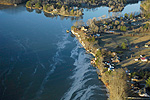
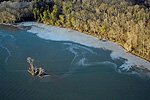
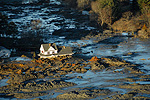
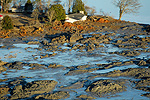
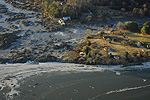


Leave a Reply